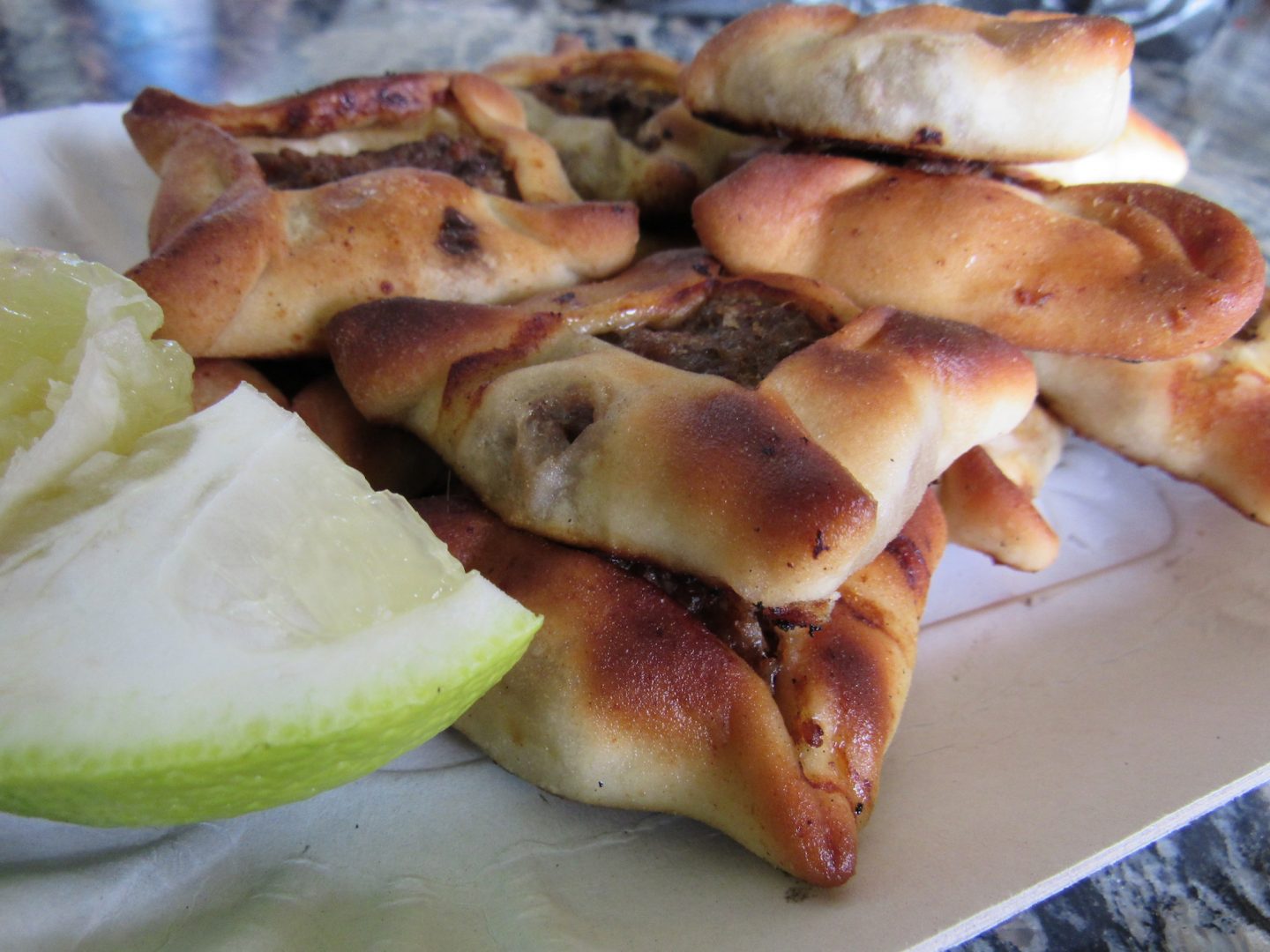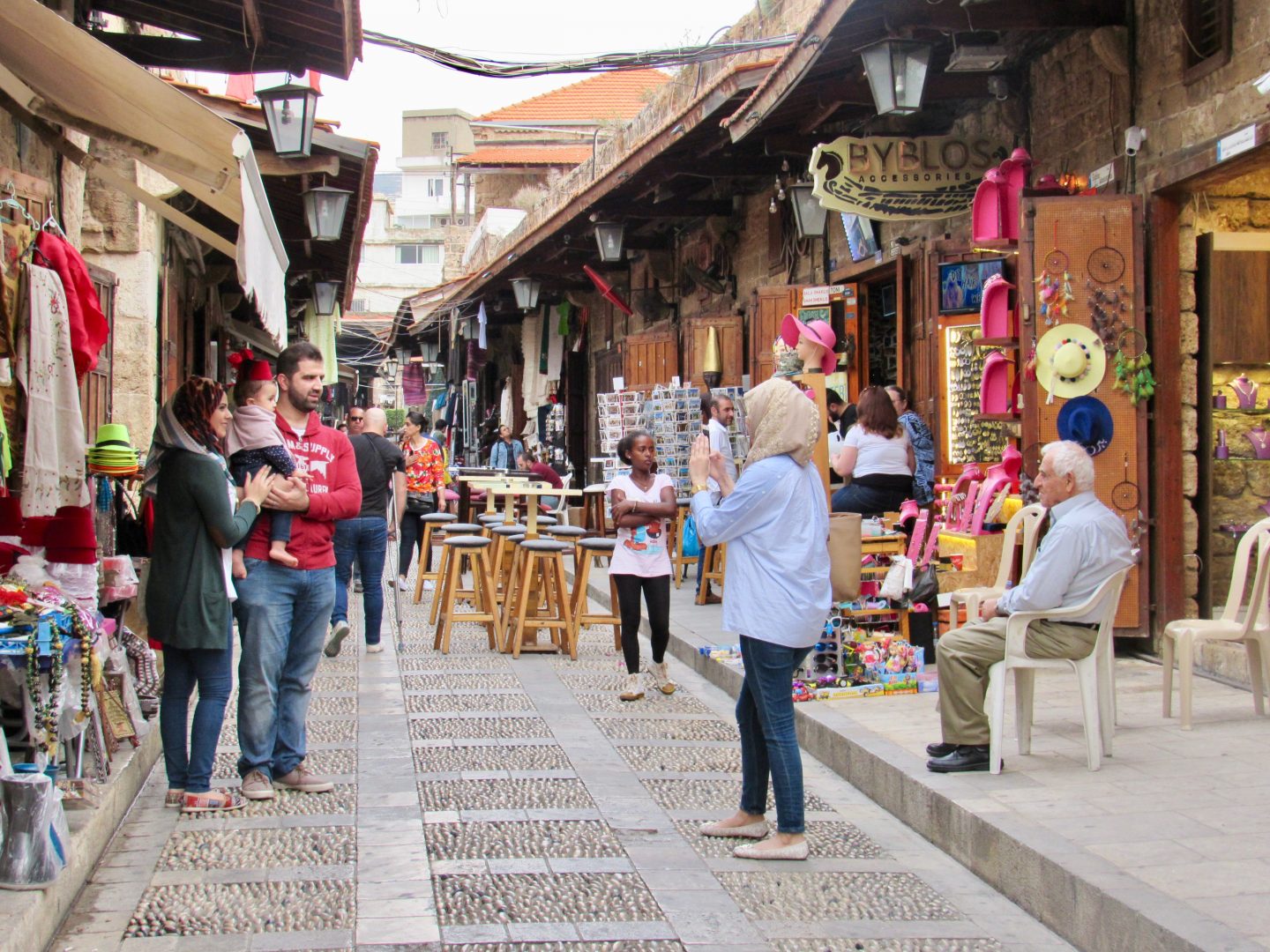The two sites you must visit in Lebanon are the Jeita Grotto and the ancient city of Baalbek. It is very easy to visit the cave as it is near Beirut. Baalbek is further, about 90 kilometers. The tour takes a little less than two hours. Many people take advantage and also visit the Omeya city of Anjar.
Baalbek is in the Beeka Valley east of Lebanon almost bordering with Syria. This valley is very fertile and is where most of the country’s food is planted. Along the road you will see stalls that sell fruits and vegetables. Wine lovers can take advantage and visit one of the vineyards. Some tours include this option, or if you go on your own you can find out online which ones accept visits.
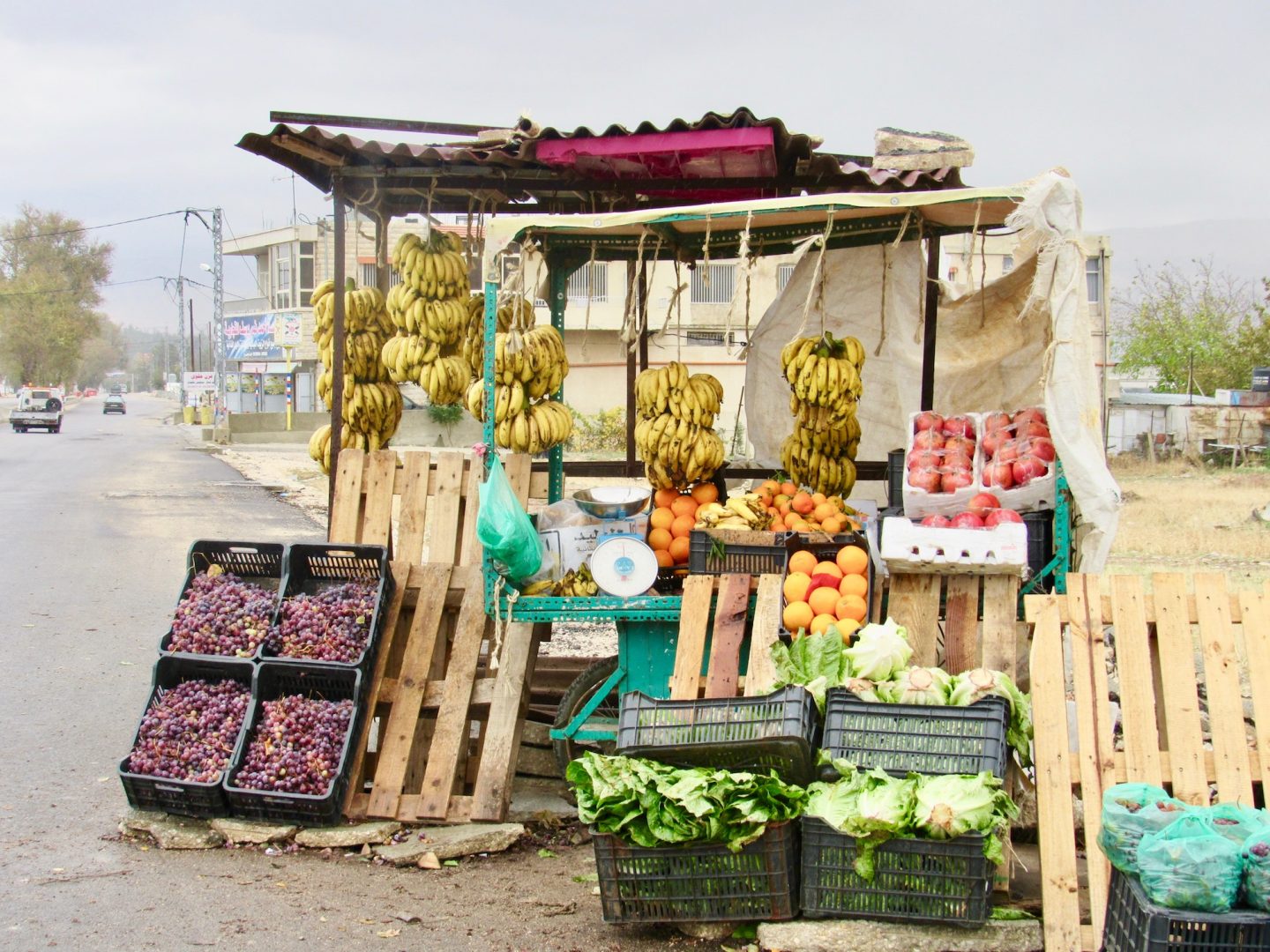
Baalbek is one of the least visited Roman temples
If you go online you will find warnings for travelers saying that you do not travel to this part of Lebanon. Baalbek is a support center for Hezbollah. There are also many refugee camps for Syrian in the Bekaa Valley.
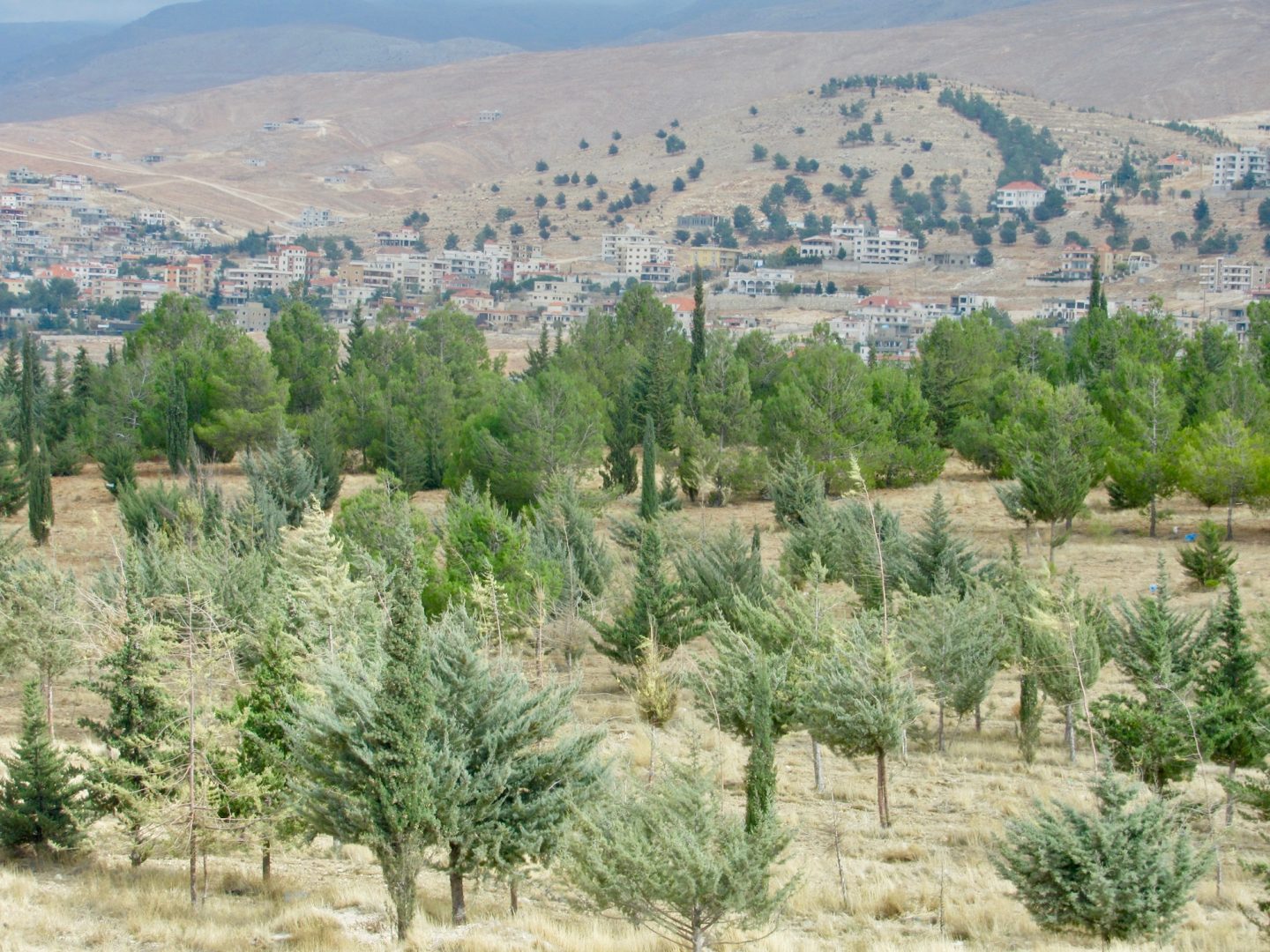
Before going I saw on Instagram photos of another Panamanian who was visiting this site with a Lebanese friend. I asked her what she thought about security and she said everything was fine. As we had rented a car we decided to drive to Baalbek. On the route there are many control points that were intimidating, but when they see that you are a tourist they let you pass quickly.

When you arrive you must park your car a little far from the entrance, in front of another ruin that for some reason does not let you visit. I asked and they told me that they have been adapting the area for more than 30 years. What is true is that archaeological works have stopped several times due to the instability of the country. At the entrance you can pay with the local currency or dollars if you don’t have change.

Opposite the entrance is the temple of Venus that looks a bit out of place with the “modern” city of Baalbek in the background.

There were two guides who offered us their service and we ended up with one called Fermi who was very eccentric and spoke very fast. He spent the entire trip flirting with my mother, but at least he liked to take many pictures. There were almost no foreign tourists, they were only local people since we went on the day of the independence of Lebanon.

As we went in November, the days were short and very cold. Baalbek is 1150 m above sea level and in the winter it snows heavily in the area. I didn’t wear gloves and I felt that my hands were freezing every time I wanted to take a picture. To top it off it rained during the tour, but luckily we had brought an umbrella.

The enigma of the stones is not yet understood
There are no more places in the world that look like Baalbek. There are so many enigmas about this site: it is said that Cain built it from the fury of God, that King Solomon built it using djinns (supernatural creatures) for the Queen of Sheba or that Nimrod built it using giants and called it the Tower of Babel.
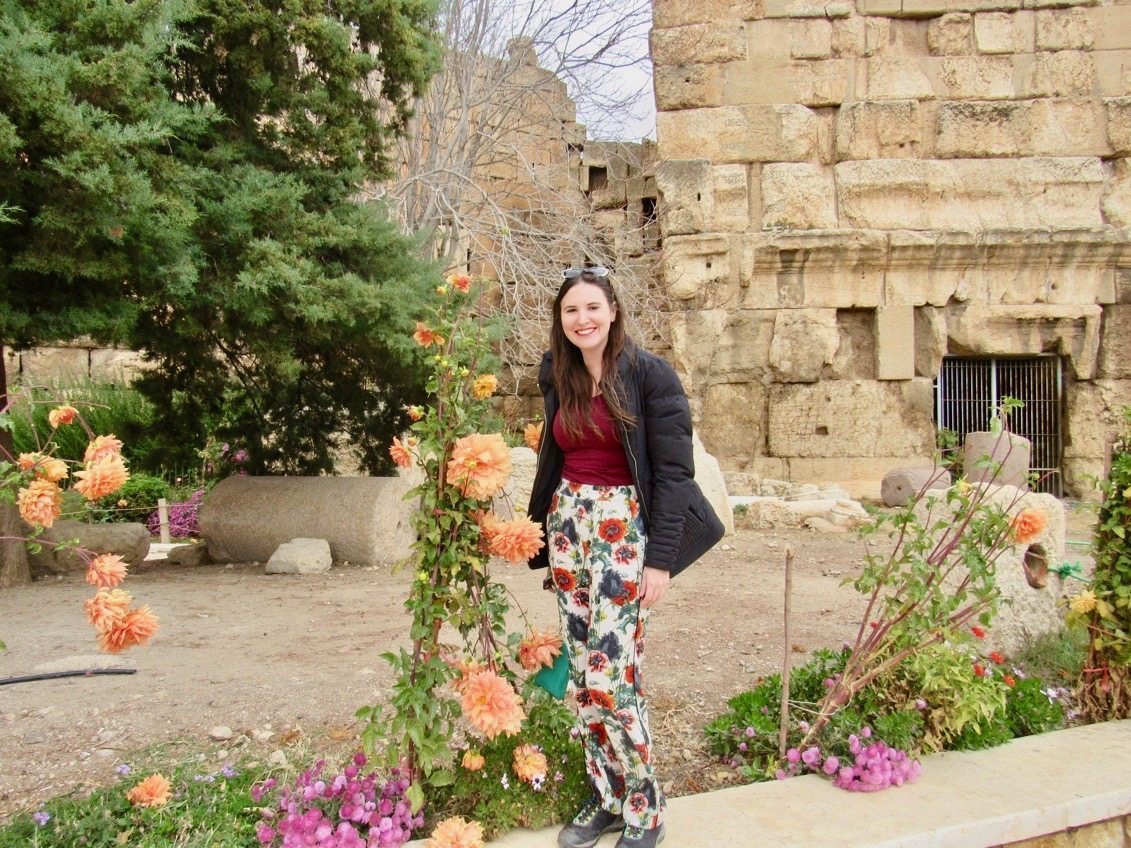
The truth is that it is not known how they moved these stones from the quarry to the site. The quarry is located a quarter of a mile from the ancient city of Baalbek.
The archaeologists who went in search of an explanation found three gigantic stones that did not move. One has a curious name, they call her the stone of the pregnant woman. The third stone was found recently, but they have not excavated its base, due to the conflicts in the region. It is estimated to weigh more than 1,200 tons.
The quarry route to Baalbek is up the hill over uneven terrain. There is no evidence that they could be moved with ropes, wooden rollers and thousands of slaves, as was done in flat parts of Egypt or Mesopotamia.
Was the great terrace of Baalbek an intergalactic platform?
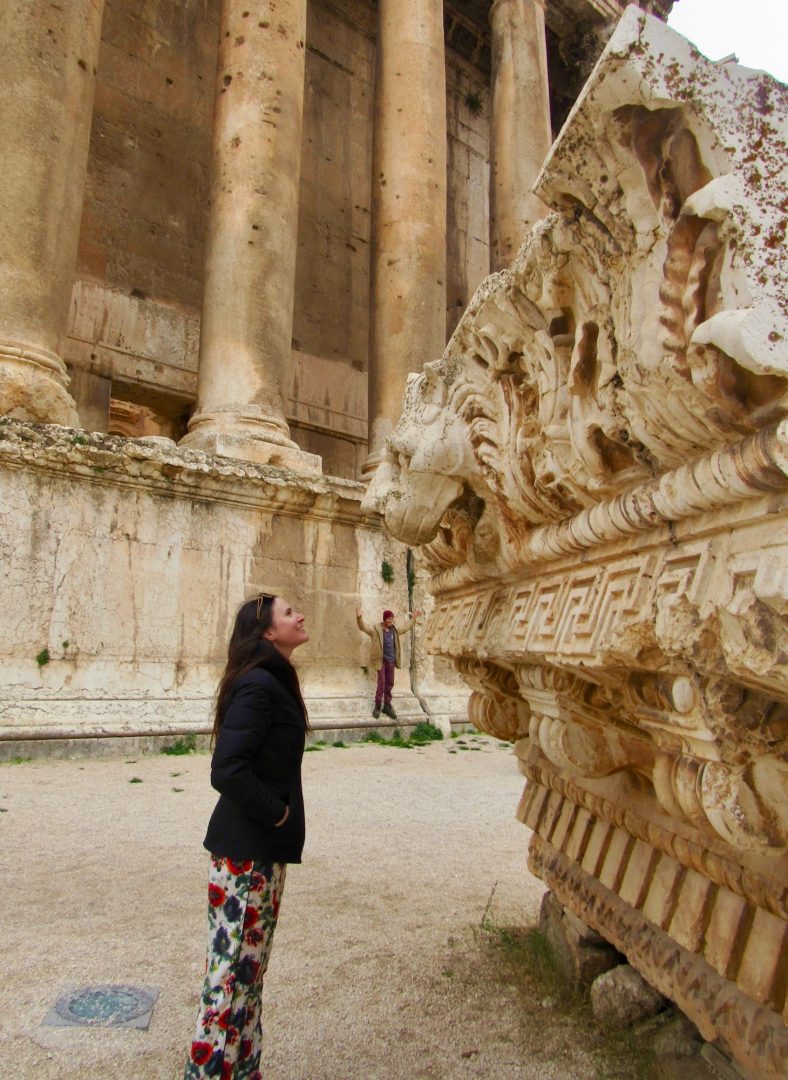
From the Phoenicians to the Romans
Baalbek is an ancient Phoenician city that may have been inhabited as early as 9000 BC during the stone age. It was a pilgrimage site to the God of heaven, Baal and his consort Astarte, the Queen of heaven.
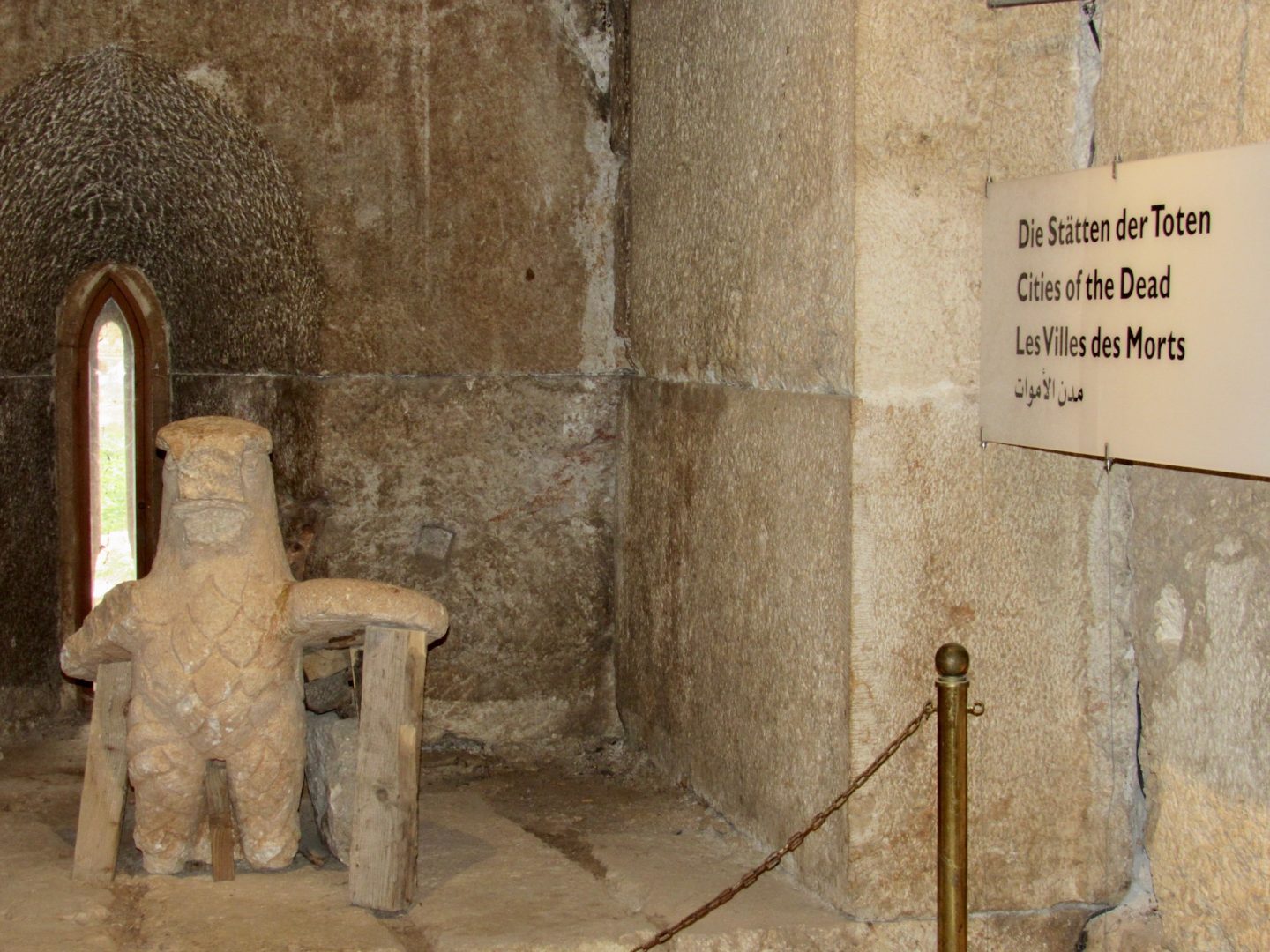
BaALbek is Aramaic and means Lord Baal of the Bekaa Valley.

Alexander the Great conquered Baalbek in 334 B.C. The Romans changed the name of the site to Heliopolis or the city of Sun. They greatly improved the city’s infrastructure.

Under the reign of Emperor Septimus Severus, the temple of Baal-Jupiter was built on the large terrace that used to be the temple of Baal and then that of Zeus. This temple is the largest and most ornate religious building in the entire history of the Roman Empire.
Only 6 original columns of the Jupiter temple remain that are currently being restored.

The temple of Bacchus is larger than the Parthenon in Athens. Bacchus is the God of wine and they have much to worship since the wines of the Beeka Valley are very good and quite economical. This was the first nightclub since parties were held with virgins. The statues inside are of people without clothes.
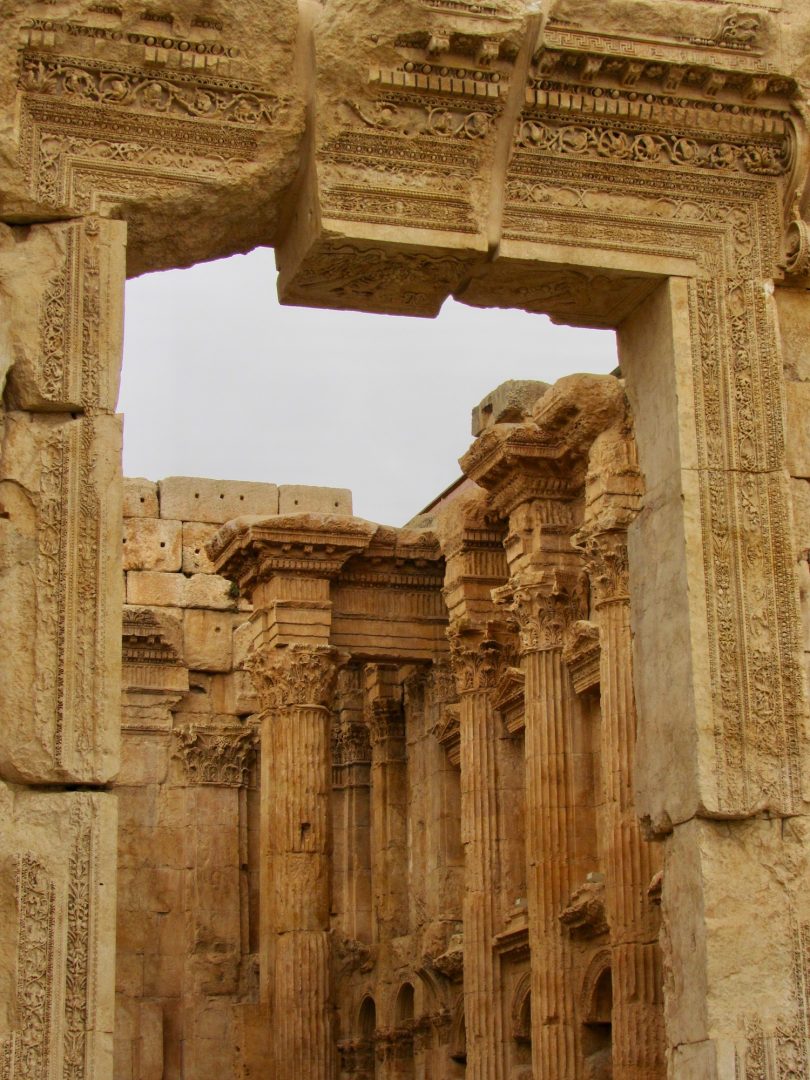
The rich families of the city gave their elder daughters as a sacrifice for Jupiter to protect them. The priests danced with them all night until there were no more virgins the next day. The pregnant women remained nine months inside the temple until they gave birth. From there they could return to their homes and the children stayed inside to become priests.

Constantine’s Catholic conquest arrives in Baalbek
Constantine the Great began to force the Christian religion in 313 A.D. The temples became churches. This included the temples of Jupiter, Bacchus, Venus and Mercury. The Byzantines moved the mosaics of the Jupiter temple to Hagia Sophia in Istanbul. They dismantled and took eight of the stone columns that were brought from Egypt.

There are hexagonal carvings on the ceiling and some have fallen. They are from the richest people of the Roman Empire who continued to donate money to build Baalbek since they loved their gods and did not believe in the Christian religion. One of these carvings has a mural by Cleopatra and Marco Aurelio.
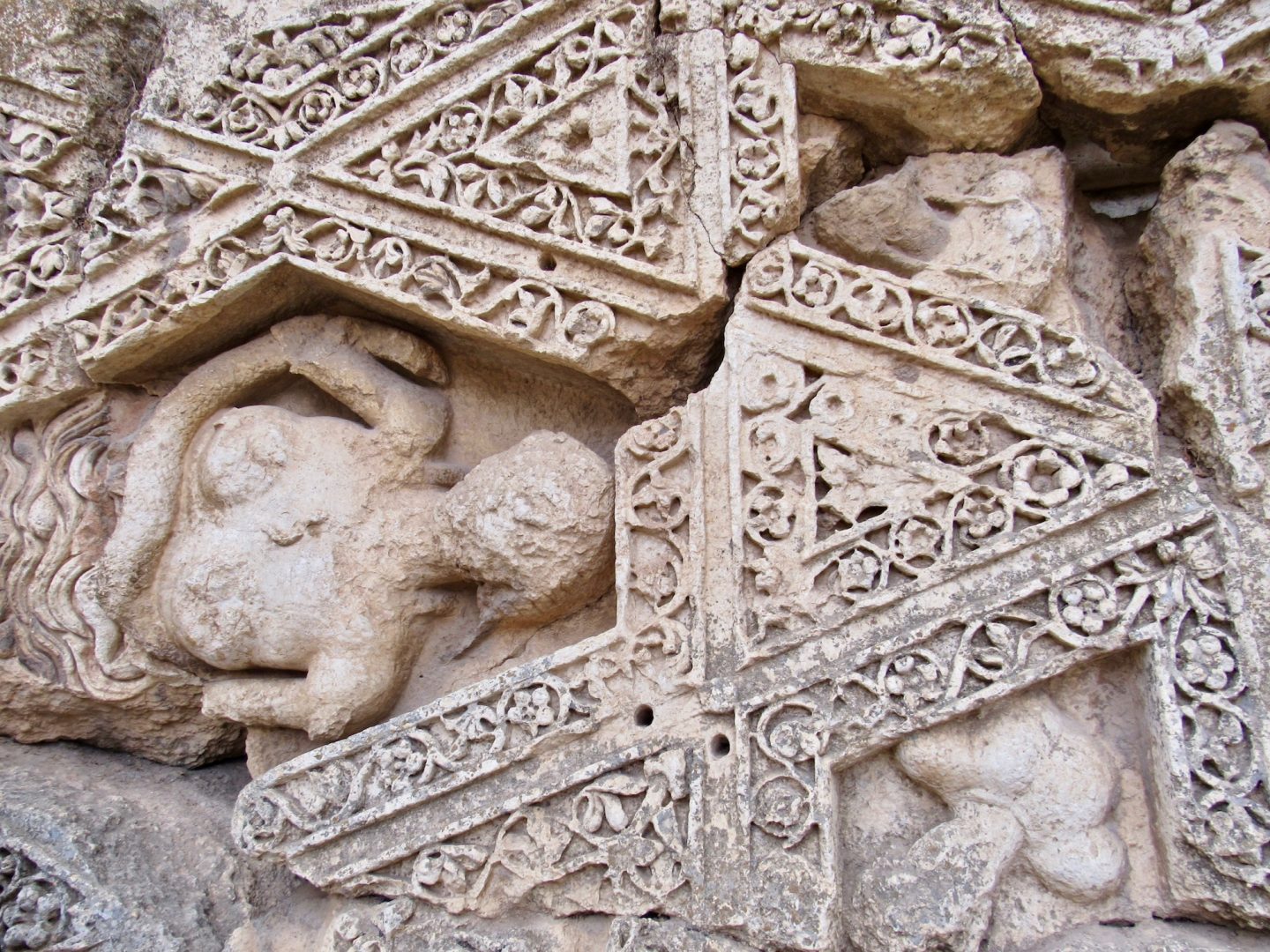
The construction was abandoned since you can see pieces of stone without carvings.

Muslims turned the city into a great fortress
In 637 the Muslims arrived when they beat the Byzantine forces. They changed the name of the area to “Al-Qalaa” which means the fortress. They took advantage to fortify the temples and the walls. They built a mosque among Roman temples and destroyed everything that was Catholic.

Our guide told us that the Muslims unearthed the fundamental stones of the Temple of Jupiter of Hadrian. They used this as their plan for the Dome of the Rock in Jerusalem thinking it was a Jewish temple.

Muhammad initially instructed his followers to pray toward the temple in Jerusalem until he realized that the Jews would not convert to Islam, then changed and addressed all the prayers to Mecca.
The Ottoman Empire pact with the Germans
The Ottoman Empire conquered the area and ignored the city and let the ruins deteriorate. Earthquakes continued to harm it, until in 1898 the German emperor Wilhelm II visited Baalbek. He made an agreement with Sultan Abdul Hamid II to divide what his archaeologists found in half. The agreement is still inside the temple of Bacchus.
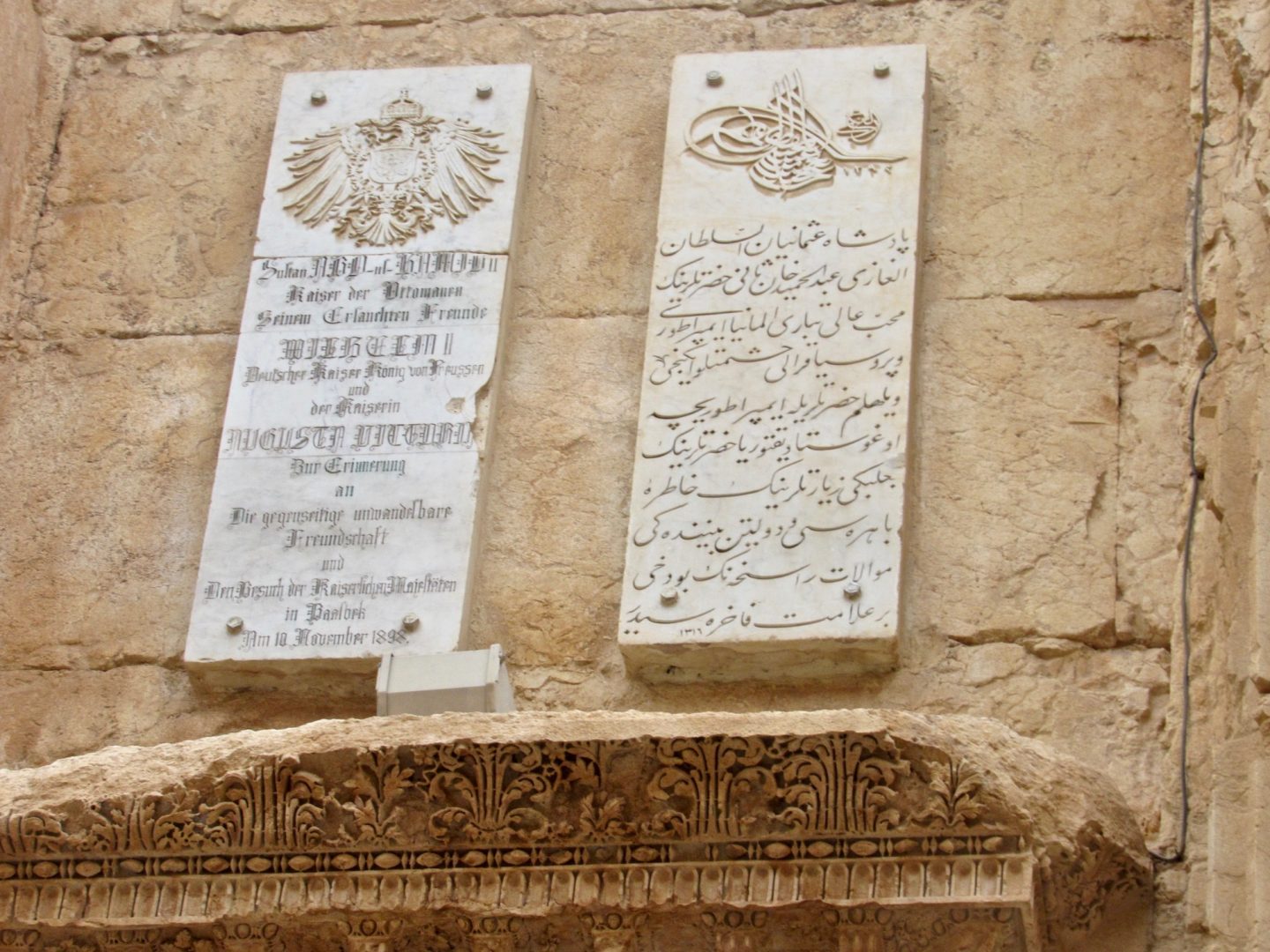
In 1903 German archaeologists arrived. The staircase to enter the city was built by them since the original fell. 85 boxes of Baalbek objects were taken to the Berlin museum and the national museum in Istanbul.

Baalbek was designated as a World Heritage Site according to UNESCO in 1984.
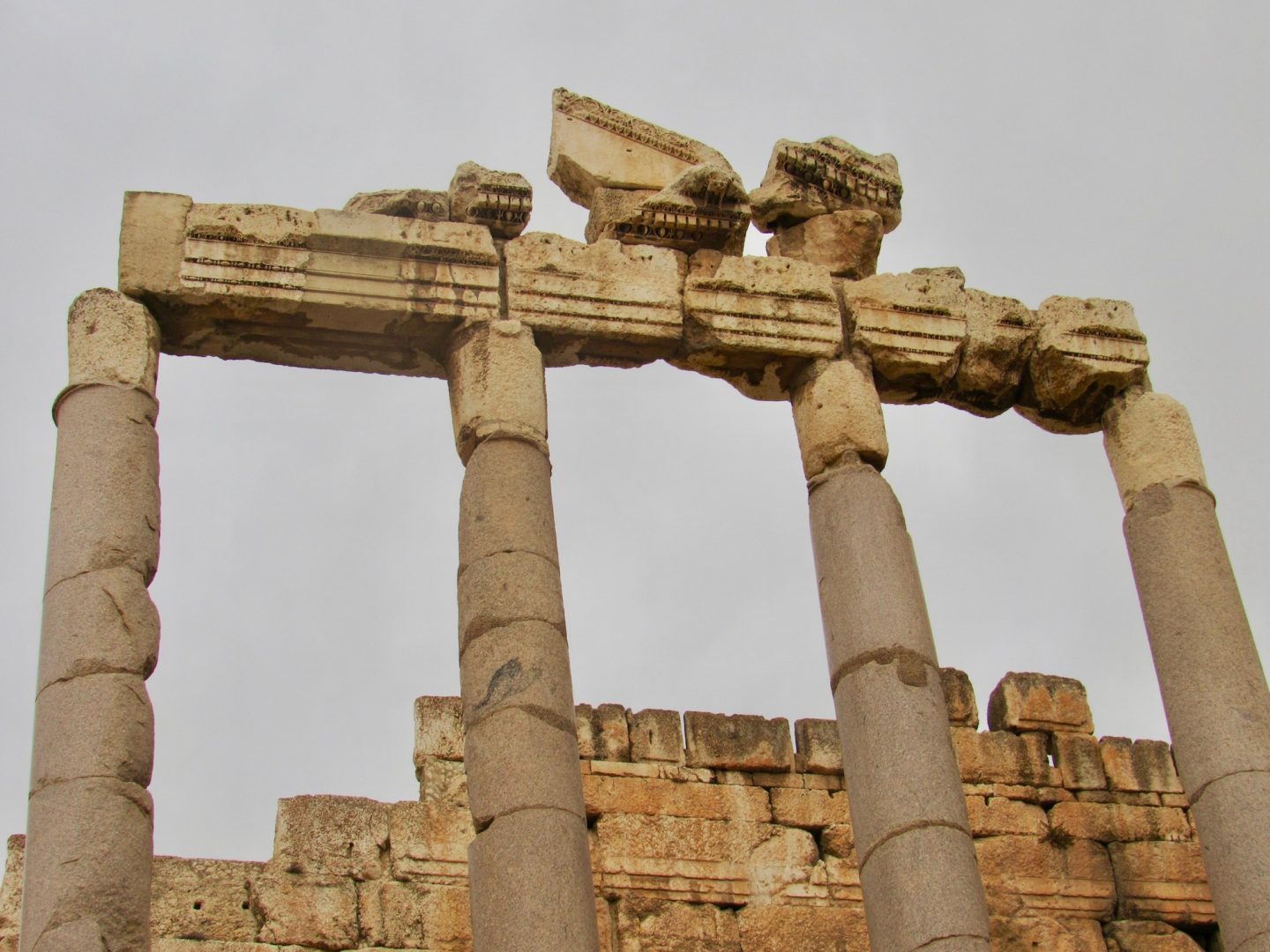
If you visit this area be sure to check the news to verify that it is calm. I also recommend that you eat a type of lamb empanadas called “sfeeha” that are sold in front in a souvenir shop. You put lemon and drink a natural yogurt.
